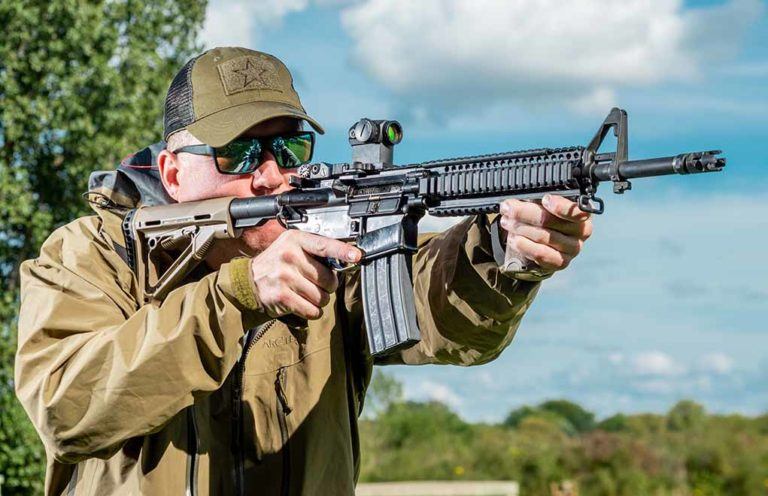
AR-15 maintenance doesn’t have to be expensive. A quick update to the bolt can breathe new life into your go-to gun.
Why you should pay attention to the bolt and BCG with your AR-15 maintenance:
- Relatively inexpensive upgrade
- Only takes minutes to replace parts
- Eliminates most common failure — failure to extract
- Bolt and BCG ware quickly giving exposure to heat, friction and contamination
When it comes to guns, it seems there’s always something on the horizon newer, lighter, faster, made from an exotic metal — or even just a different color. Sometimes the changes are innovative, and sometimes it’s just marketing hype. Either way, new features and their new price tags often mean more money that might be better spent on practice ammo or killing a credit card bill.
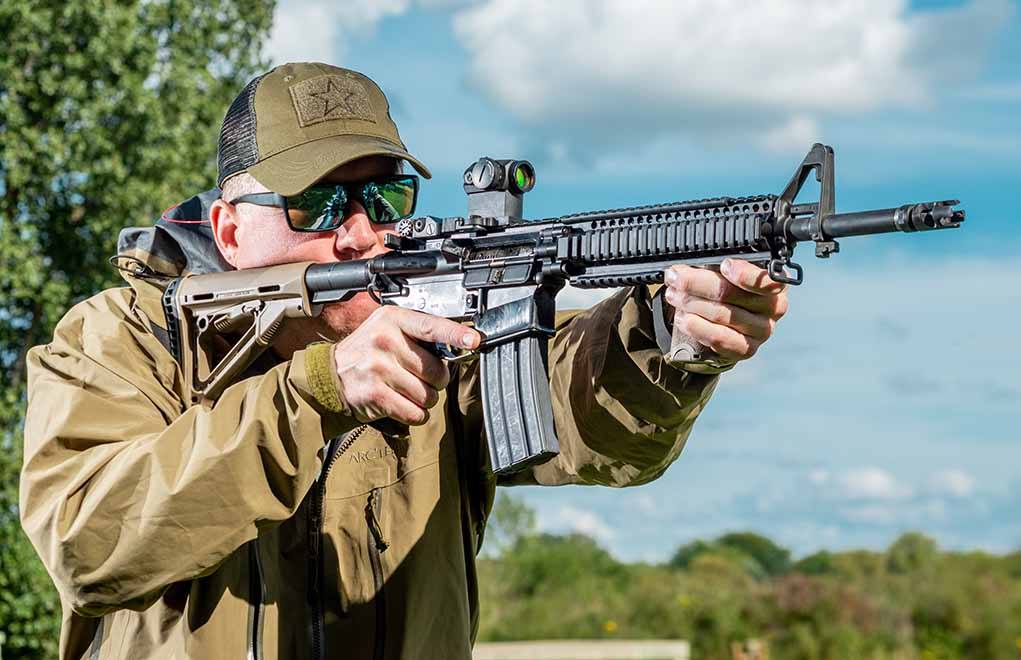
But for those of us who take our personal safety seriously and are mindful of the importance of a well-maintained firearm, a few simple checks and a change-out of inexpensive replacement parts in your bolt can keep your AR running reliably — and prevent one of the most common stoppage issues experienced by AR shooters: a failure to extract.
Just so we’re on the same page, the plain meaning of the term “failure to extract” is when the spent cartridge casing will not properly exit the rifle upon firing. Simple enough to identify. A combination of factors can create this problem, but the causes — other than a dirty action and an out-of-spec magazine — are most commonly an issue with the extractor, extraction process or gas system.
Read Also: Addressing Common AR Malfunctions
Either the extractor — a hook-shaped, spring-tensioned part located on the front of the bolt at approximately the 10 o’clock position as viewed from the bolt face — is failing to grab the rim of the casing and pull it from the chamber, or the gas system isn’t supplying the force necessary to enable the bolt to cycle.
The extractor is actually part of the AR’s bolt head, and when installed it has a locking lug on the outside and a round, claw interior that completes the circle of the bolt face. The extractor sits opposite the ejector pin, and the two parts work in tandem, with the extractor anchoring the base of the cartridge case and the and ejector pin pushing the opposite side to send the spent case out of the action when the weapon cycles.
More AR Articles:
- 7 Affordable 9mm Carbine Options
- Top Options In AR Pistols From Daniel Defense
- Properly Using A Defensive AR-15 From Cover
- Should You Own A Pistol Caliber Carbine?
The bolt carriage group in general, and the bolt, specifically, are exposed to a great deal of heat, friction and contamination. Each time a round fires, this system of parts experiences forceful movement, friction and spring compression, as well as linear and rotational forces. Like any machine, the parts wear with use. In particular, the springs are repeatedly compressed and the metal parts heat and cool. The inevitable results are the springs get weaker and eventually provide resistance beneath their manufacturer’s specifications, and metal parts can chip, shear or shatter.
Read Also: A Word on AR-15 Carrier Life
Like brakes on our vehicle, heading downhill into a traffic pile-up is not the time to consider the last time you replaced worn parts. The good news for you and your AR is that a simple and inexpensive upgrade exists that takes only minutes and a few dollars to complete.
The Extractor And Extractor Spring
My preference for bolt maintenance is the Bravo Company Manufacturing (BCM) SOPMOD Bolt Upgrade/Rebuilt Kit. The kit may be purchased in two ways: The basic package is an Extractor Spring Upgrade Kit that includes the extractor spring, extractor insert and Crane Industrial mil-spec O-ring — with a miniscule MSRP of $4.95. The full Bolt Upgrade/Rebuild Kit also includes the Extractor Spring Kit along with a BCM extractor, an extractor pin and three USGI gas rings for only $29.95.
Read Also: How To Care For And Upgrade AR Springs
I prefer the BCM kit; I have first-hand experience with the obsessive quality control Paul Buffoni and the BCM team puts into their parts. BCM’s high standards for specifications and tolerances have the reputation of the highest OEM part reject rate in the industry. My first and favorite AR is a BCM, and after more than 12,000 rounds with minimal issues, I finally conceded to follow my own advice and give the bolt a rebuild. After thousands of rounds, ammo types, external conditions and heavy use, it was still as reliable as the day it came out of the box.
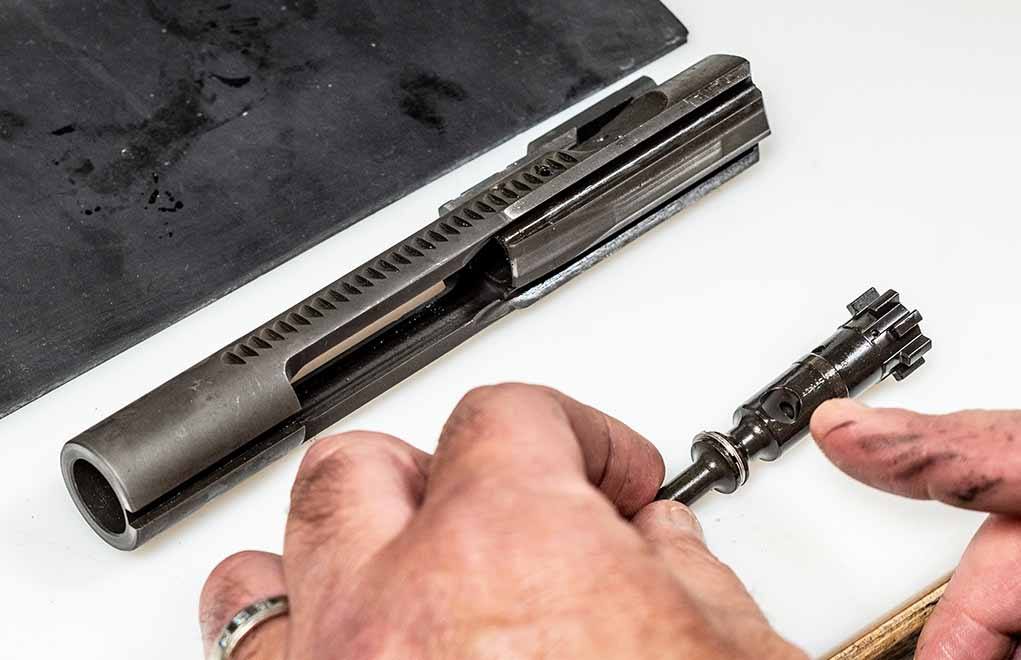
But nothing lasts forever.
Having started with a BCM, I was replacing an old part with a new one of the same quality. But for those who are not sure of the provenance of their ARs parts, installing a shot-peened USGI spec extractor is likely a step-up in quality and reliability, given the standards some manufacturers tolerate. Additionally, the extractor spring is chrome silicon, heat treated, stress-relieved and shot-peened, which means it’s made of the best components available and manufactured such that it will continue to perform long after lesser components fail.
The change-out requires only a punch to push out the extractor pin, a quick clean of the bolt’s surface beneath the extractor and replacement of the new spring and extractor insert in the same manner they came out. Note the orientation and thickness of the spring relative to the bolt, and be certain to replace the two parts in the same order. Press and hold the extractor in place and replace the pin.
When working with a new spring, it might take more pressure to line up the extractor with the holes in the bolt, but just take your time. Upon inspection, my extractor claw showed minimal wear for the number of rounds cycled through the AR. It by no means looked new, but it was far better than other sad examples I’ve seen where the claw is worn to a humble nub, or where the claw actually snapped off — which is a catastrophic failure.
I have omitted mentioning the mil-spec O-ring because many consider it superfluous and an early fix to a design flaw in the extraction timing. The historical arguments are many, but the ultimate answer is that it’s optional with modern extractor springs, so decide for yourself — or try it both ways and see which works better for your AR. It’s unlikely that you’ll notice a difference.
The Gas Rings
The second element of the bolt rebuild is a replacement of the three gas rings on the tail-end of the bolt. The rings modulate the amount of gas that passes through the bolt carriage group and form a seal that pushes the bolt forward as part of the firing sequence.
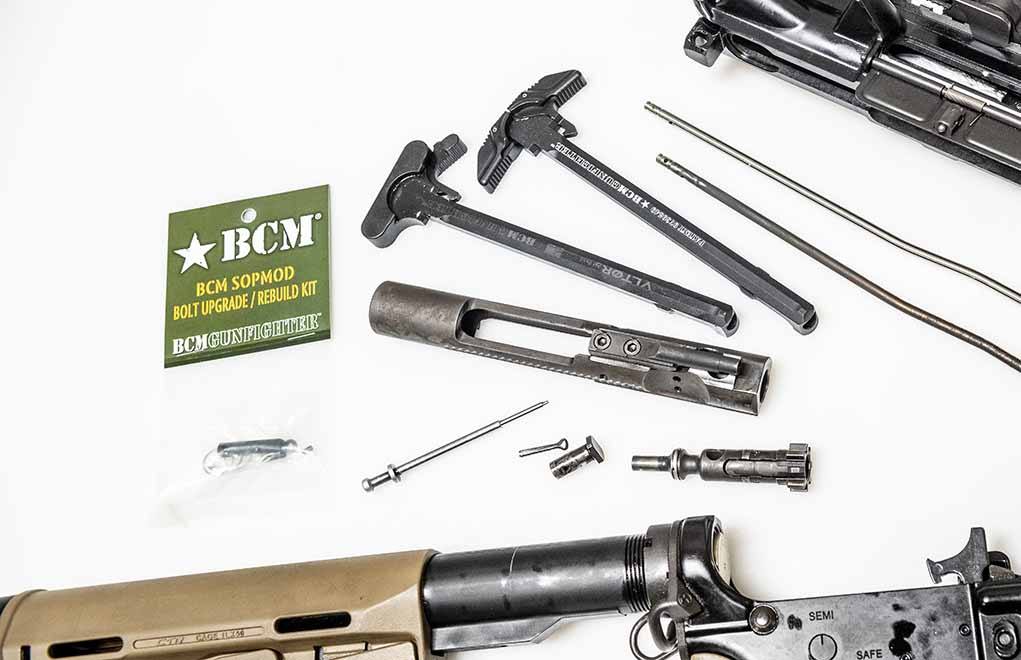
Some shooters argue that an AR will function without these rings, and they may be correct. But purposely or negligently creating gas imbalances in your ARs system where reliability is your primary concern is a silly idea, so treat the gas rings as maintenance items and replace them regularly. A BCM ring three-pack will cost you $2.95 — so, other than a good cleaning, it’s the least expensive way to improve the reliability of your AR.
Read Also: Under Gassed? Check Your Gas Rings
A practical but unscientific test is to press the bolt into the carrier, hold the bolt carrier group (BCG) in the air by the bolt and observe whether it slides down. The opposite approach works by pulling the bolt out and setting the BCG on the bolt head: If the bolt can hold the carrier in either direction, your rings are still in good shape. The rule of thumb is to change them out every 5,000 rounds. Again, my rifle was at 12,000 rounds and the rings passed the test, but I changed them out anyway.
Removing the O-ring is most easily accomplished with the help of a dental pick to spread the ring at its respective split and slide it off the body of the bolt. The first ring is tricky; the second and third are easy. Install the new rings by sliding them down over the tail of the bolt making sure they don’t overlap.
Back In Action
I put the AR to work the next day in a two-day carbine course with Kyle Defoor’s Proformance Shooting. Through 600 rounds of Black Hills Ammunition 77-grain OTM between two shooters, we experienced zero fails, just like before, along with the added confidence that a potential extraction problem was further away.
All in, the most expensive approach to this maintenance exercise was less than $30, but you can still improve your system by choosing the gas rings or extractor springs, both of which are less than $5. The entire rebuild process took about 15 minutes.
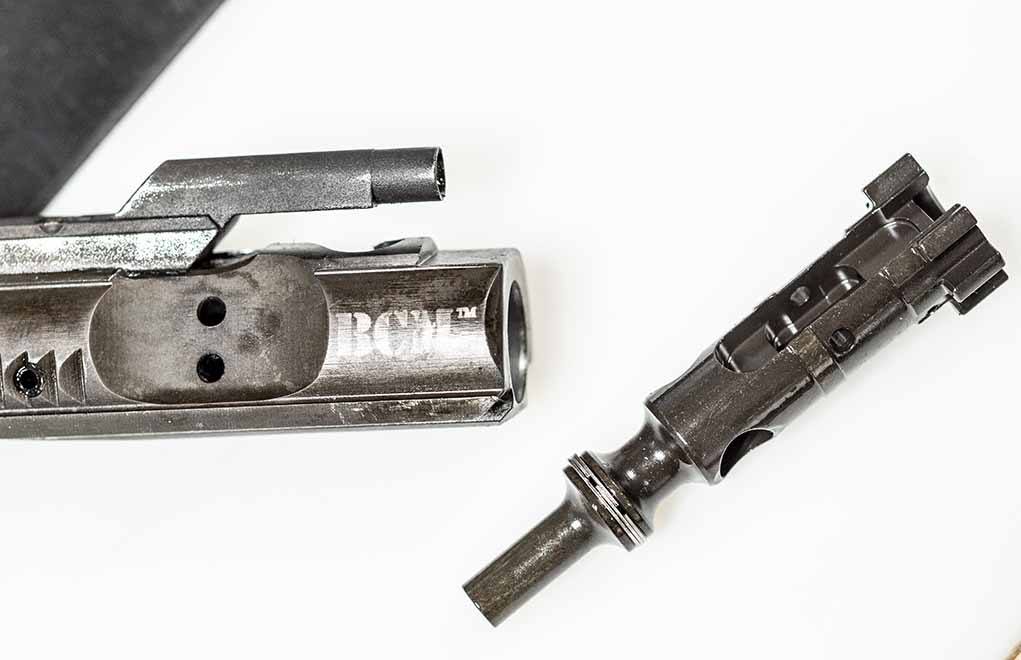
If this process sounds complicated but you’re still concerned about your bolt’s maintenance, a brand new bolt from BCM is $79.95. Additionally, if your existing bolt functions normally and you choose to replace it as a matter of maintenance, keep it as a backup.
In many of today’s aftermarket pistol grips, there’s a locking cover that turns the hollow grip into a small storage compartment, and most will accommodate a bolt. Give it a light lube and wrap it in a small Ziploc bag to waterproof it and keep it quiet, and a back-up will never be far away.
Editor's Note: This article originally appeared in the December 2018 issue of Gun Digest the Magazine.

Next Step: Get your FREE Printable Target Pack
Enhance your shooting precision with our 62 MOA Targets, perfect for rifles and handguns. Crafted in collaboration with Storm Tactical for accuracy and versatility.
Subscribe to the Gun Digest email newsletter and get your downloadable target pack sent straight to your inbox. Stay updated with the latest firearms info in the industry.

![Best Concealed Carry Guns In 2025 [Field Tested] Wilson Combat EDC X9S 1](https://gundigest.com/wp-content/uploads/Wilson-Combat-EDC-X9S-1-324x160.jpg)


![Best 9mm Carbine: Affordable PCCs [Tested] Ruger Carbine Shooting](https://gundigest.com/wp-content/uploads/Ruger-Carbine-Shooting-100x70.jpg)
![Best AR-15: Top Options Available Today [Field Tested] Harrington and Richardson PSA XM177E2 feature](https://gundigest.com/wp-content/uploads/Harrington-and-Richardson-PSA-XM177E2-feature-100x70.jpg)
